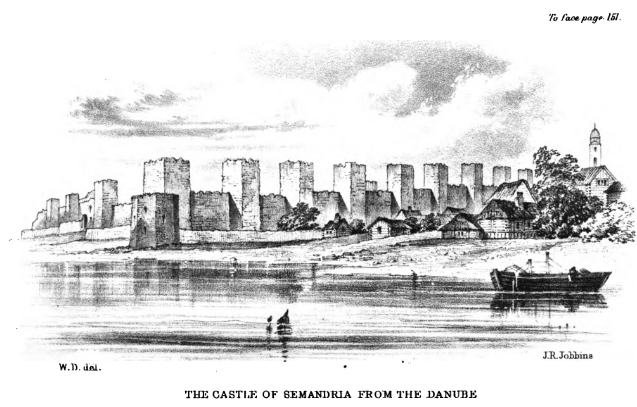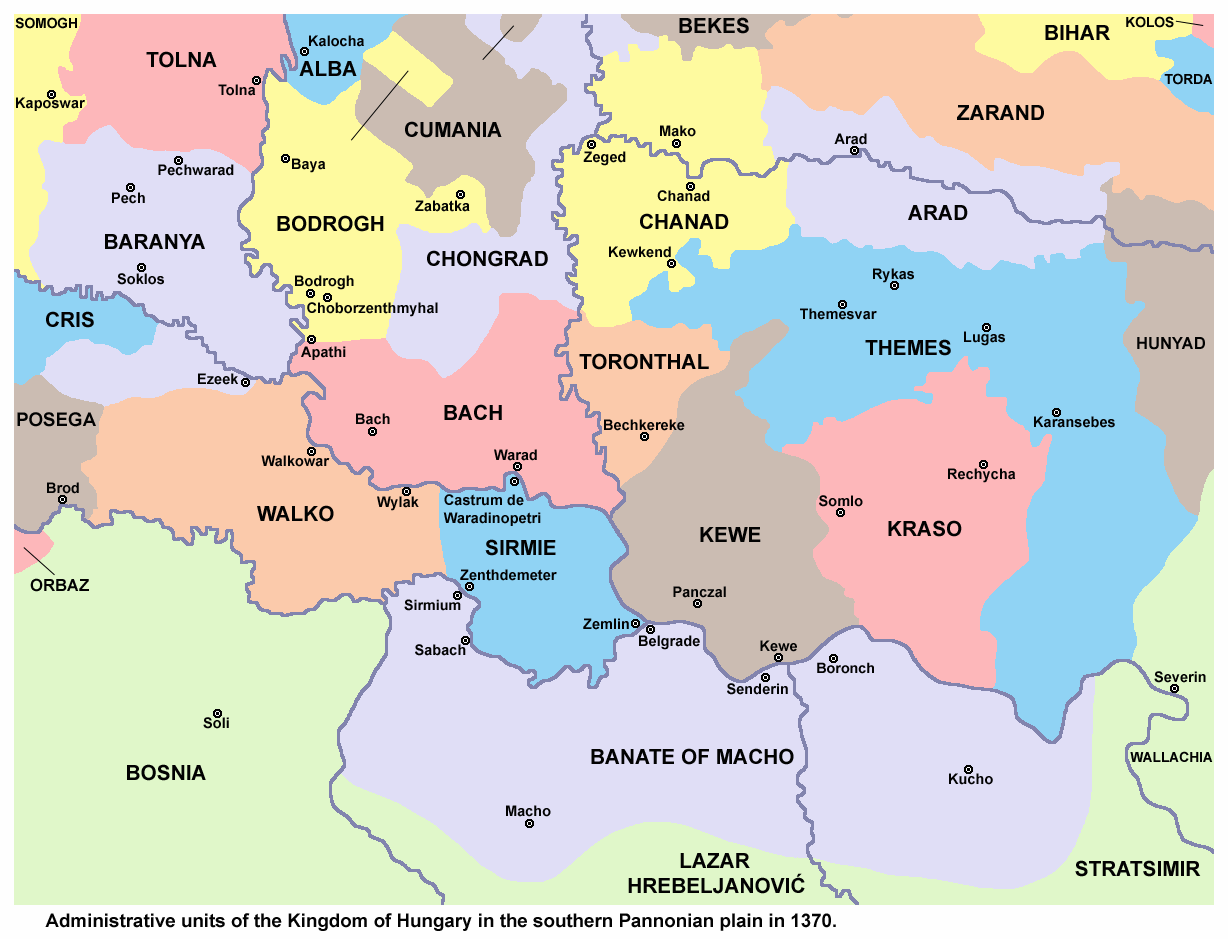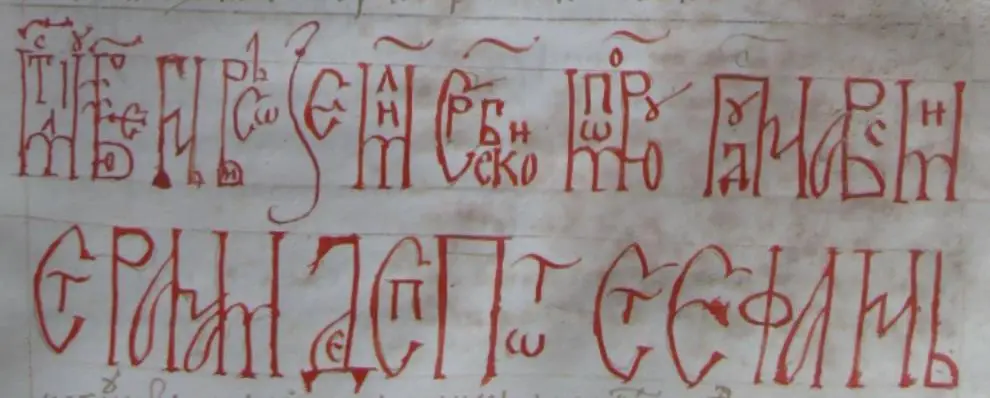SERVIA,
YOUNGEST MEMBER OF THE EUROPEAN FAMILY:
OR, A
RESIDENCE IN BELGRADE,
AND
TRAVELS IN THE HIGHLANDS AND WOODLANDS OF THE INTERIOR,
DURING THE YEARS 1843 AND 1844.
BY
ANDREW ARCHIBALD PATON, ESQ.
Rich Soil.—Mysterious Waters.—Treaty of Passarovitz.—The Castle of Semendria—Relics of the Antique.—The Brankovitch Family.—Pancsova.—Morrison’s Pills.
The soil at Posharevatz is remarkably rich, the greasy humus being from fifteen to twenty-five feet thick, and consequently able to nourish the noblest forest trees. In the Banat, which is the granary of the Austrian empire, trees grow well for fifteen, twenty, or twenty-five years, and then die away. The cause of this is, that the earth, although rich, is only from three to six feet thick, with sand or cold clay below; thus as soon as the roots descend to the substrata, in which they find no nourishment, rottenness appears on the top branches, and gradually descends.
At Kruahevitza, not very far from Pasharevatz, is a cave, which is, I am told, entered with difficulty, into the basin of which water gradually flows at intervals, and then disappears, as the doctor of the place (a Saxon) told me, with an extraordinary noise resembling the molar rumble of railway travelling. This spring is called Potainitza, or the mysterious waters.
Posharevatz, miscalled Passarowitz, is historically remarkable, as the place where Prince Eugene, in 1718, after his brilliant victories of the previous year, including the capture of Belgrade, signed, with the Turks, the treaty which gave back to the house of Austria not only the whole of Hungary, but added great part of Servia and Little Wallachia, as far as the Aluta. With this period began the Austrian rule in Servia, and at this time the French fashioned Lange Gasse of Belgrade rose amid the “swelling domes and pointed minarets of the white eagle’s nest.”1
Several quaint incidents had recalled this period during my tour. For instance, at Manasia, I saw rudely engraven on the church wall,—
Wolfgang Zastoff,
Kaiserlicher Forst-Meister im Maidan.
Die 1 Aug. 1721.
Semendria is three hours’ ride from Posharevatz; the road crosses the Morava, and everywhere the country is fertile, populous, and well cultivated. Innumerable massive turrets, mellowed by the sun of a clear autumn, and rising from wide rolling waters, announced my approach to the shores of the Danube. I seemed entering one of those fabled strong holds, with which the early Italian artists adorned their landscapes. If Semendria be not the most picturesque of the Servian castles of the elder period, it is certainly by far the most extensive of them. Nay, it is colossal. The rampart next the Danube has been shorn of its fair proportions, so as to make it suit the modern art of war. Looking at Semendria from one of the three land sides, you have a castle of Ercole di Ferrara; looking at it from the water, you have the boulevard of a Van der Meulen.
The Natchalnik accompanied me in a visit to the fortress, protected from accident by a couple of soldiers; for the castle of Semendria is still, like that of Shabatz, in the hands of a few Turkish spahis and their families. The news from Shabatz having produced a alight ferment, we found several armed Moslems at the gate; but they did not allow the Servians to pass, with the exception of the Natchalnik and another man. “This is new,” said he; “I never knew them to be so wary and suspicious before.” We now found ourselves within the walls of the fortress. A shabby wooden café was opposite to us; a mosque of the same material rose with its worm-eaten carpentry to our right. The cadi, a pompous vulgar old man, now met us, and signified that we might as well repose at his chardak, but from inhospitality or fanaticism, gave us neither pipes nor coffee. His worship was so proud, that he scarcely deigned to speak. The Disdar Aga, a somewhat more approximative personage, now entered the tottering chardak, (the carpenters of Semendria seem to have emigrated en masse,) and proffered himself as Cicerone of the castle.
Mean and abominable huts, with patches of garden ground filled up the space inclosed by the gorgeous ramparts and massive towers of Semendria. The further we walked the nobler appeared the last relic of the dotage of old feudal Servia. In one of the towers next the Danube is a sculptured Roman tombstone. One graceful figure points to a sarcophagus, close to which a female sits in tears; in a word, a remnant of the antique—of that harmony which dies not away, but swells on the finer organs of perception.
“Eski, Eski. Very old,” said the Disdar Aga, who accompanied me.
“It is Roman,” said I.
“Roumgi?” said he, thinking I meant Greek.
“No, Latinski,” said a third, which is the name usually given to Roman remains.
As at Sokol and Ushitza, I was not permitted to enter the inner citadel;2 so, returning to the gate, where we were rejoined by the soldiers, we went to the fourth tower, on the left of the Stamboul Kapu, and looking up, we saw inserted and forming part of the wall, a large stone, on which was cut, in basso rilievo, a figure of Europa reposing on a bull. Here was no fragile grace, as in the other figure; a few simple lines bespoke the careless hardihood of antique art.
The castle of Semendria was built in 1432, by the Brankovitch, who succeeded the family of Knes Lasar as despots, or native rulers of Servia, under the Turks; and the construction of this enormous pile was permitted by their masters, under the pretext of the strengthening of Servia against the Hungarians. The last of these despots of Servia was George Brankovitch, the historian, who passed over to Austria, was raised to the dignity of a count; and after being kept many years as a state prisoner, suspected of secret correspondence with the Turks, died at Eger, in Bohemia, in 1711. The legitimate Brankovitch line is now extinct.3
Leaving the fortress, we returned to the Natchalnik’s house. I was struck with the size, beauty, and flavour of the grapes here; I have nowhere tasted such delicious fruit of this description. “Groja Smederevsko” are celebrated through all Servia, and ought to make excellent wine.
The road from Semendria to Belgrade skirts the Danube, across which one sees the plains of the Banat and military frontier. The only place of any consequence on that side of the river is Pancsova, the sight of which reminded me of a conversation I had there some years ago.
The major of the town, after swallowing countless boxes of Morrison’s pills, died in the belief that he had not begun to take them soon enough. The consumption of these drugs at that time almost surpassed belief. There was scarcely a sickly or hypochondriac person, from the Hill of Presburg to the Iron Gates, who had not taken large quantities of them. Being curious to know the cause of this extensive consumption, I asked for an explanation.
“You must know,” said an individual, “that the Anglo-mania is nowhere stronger than in this part of the world. Whatever comes from England, be it Congreve rockets, or vegetable pills, must needs be perfect. Dr. Morrison is indebted to his high office for the enormous consumption of his drugs. It is clear that the president of the British College must be a man in the enjoyment of the esteem of the government and the faculty of medicine; and his title is a passport to his pills in foreign countries.”
I laughed heartily, and explained that the British College of Health, and the College of Physicians, were not identical.
The road from this point to Belgrade presents no particular interest. Half an hour from the city I crossed the celebrated trenches of Marshal Laudohn; and rumbling through a long cavernous gateway, called the Stamboul Kapousi, or gate of Constantinople, again found myself in Belgrade, thankful for the past, and congratulating myself on the circumstances of my trip. I had seen a state of patriarchal manners, the prominent features of which will be at no distant time rolled flat and smooth, by the pressure of old Europe, and the salient angles of which will disappear through the agency of the hotel and the stagecoach, with its bevy of tourists, who, with greater facilities for seeing the beauties of nature, will arrive and depart, shrouded from the mass of the people, by the mercenaries that hang on the beaten tracks of the traveller.
- In Servian, Belgrade is called Beograd, “white city;”—poetically, “white eagle’s nest.” ↩︎
- I think that a traveller ought to see all that he can; but, of course, has no right to feel surprised at being excluded from citadels. ↩︎
- One of the representatives of the ancient imperial family is the Earl of Devon, for Urosh the Great married Helen of Courtenay. ↩︎



